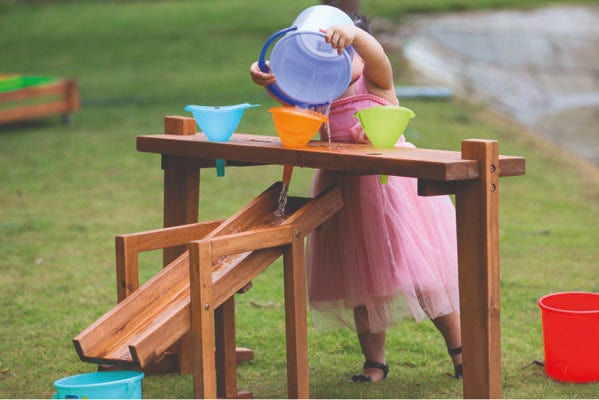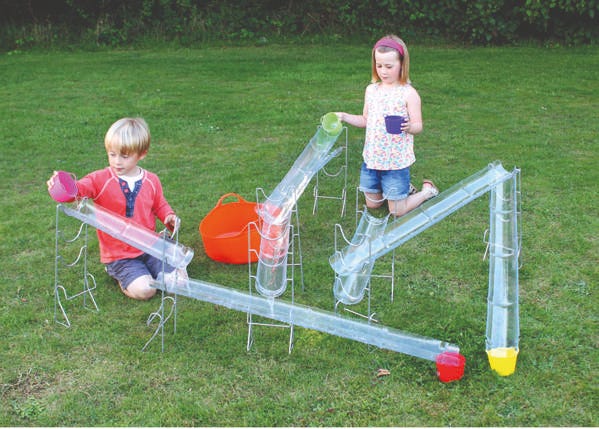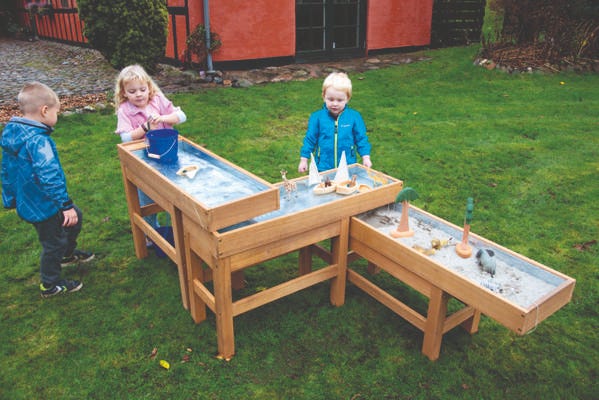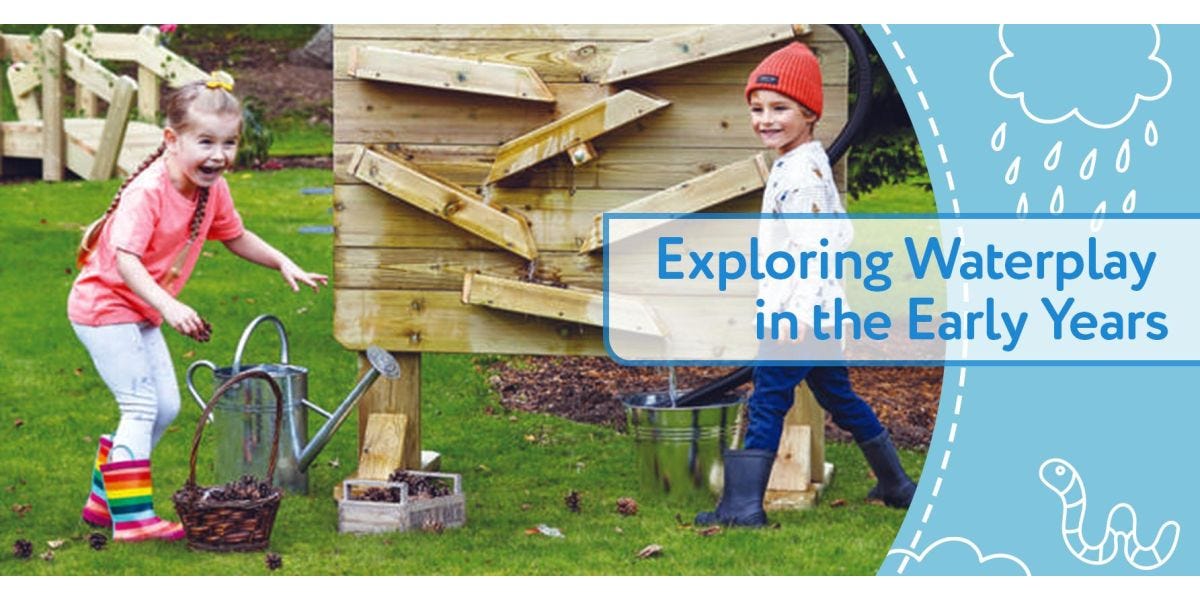What is waterplay?
Waterplay is naturally engaging and adaptive providing rich opportunities for inquiry and investigation as well as learning across the curriculum. Through waterplay children develop independence as well as social skills as they share ideas and resources and engage in cooperative play. Children also develop thinking and problem-solving skills and develop their understanding of mathematical and scientific concepts such as buoyancy, absorption, movement, and force.
Continuous Provision - The Water Area
Organisation:
The water area is best placed on a non-slip surface, near a water source enabling easy filling and independent access. Transparent trays offer opportunities for children to observe both above and under the water. A plank, shelf or a small table next to the water tray is a useful addition to enable children to balance containers for pouring and filling. Include aprons on pegs at child height, signs reminding children of the rules in the area, photos of potential activities and a water word wall
including words such as; splash, sink, slip and trickle.
Resources:
Place resources on shelves in labelled baskets enabling children to access and return them easily.
These could include:
- Containers - cylinders, bottles, jugs, funnels, cups and ice-cube trays
- Resources for transporting water - spoons, scoops, nets, sieves, pipettes, tweezers, wheels, pipes, channels and pumps
- Cooking utensils - tea set, whisk, baking tray and saucepans
- Small world – shells, ocean and pond creatures and boats
- Resources for investigation - corks, sponges, foil, tubs and plasticine


The adult’s role:
- Planning, reviewing, and sourcing ideas and activies
- Modelling skills and activities
- Introducing new vocabulary and engaging in conversations to promote language development
Questioning and challenging to promote inquiry and thinking skills for example:
- “I wonder why this floats?”
- “Can you make the water travel more slowly?”
- “Can you make a boat that floats?”
Enhanced Provision
Below you can find 8 activity ideas designed to align with specific learning outcomes to motivate and inspire you to incorporate water play into your setting.


Communication & Language
Storytelling: Provide props and resources for children to retell water related stories, for example, “Mr Gumpy’s Outing” by Jon Burmingham or “The Snail and the Whale” by Julia Donaldson. Encourage children to sequence the story and use storybook language. Invite children to discuss the characters and settings, to invent their own characters or suggest an alternative endings.
Personal, Social and Emotional Development
Baby bath time: add dolls, bubble bath, change mats, towels and reusable nappies to the the waterplay area. Use the opportunity to talk about caring for others, personal hygiene and the importance of keeping our bodies clean.
Physical development
Pick a pom pom: Add pom poms, glass beads, tweezers and small containers to the water tray to support fine motor skills.
Literacy
Add letter and word pebbles and nets to the water tray. Encourage children to fish for the pebbles to spell out familiar words or to create sentences.
Maths
Hook a duck: Add numbered duck or fish to the water tray. Sing five little ducks, hook and put ducks in order or hook two ducks and add or subtract the numbers.
Understanding the World
Save our seas: Add a range of materials such as netting, shells, twigs, bottle tops and bubble wrap to the water tray along with sea creatures. Collect and sort the materials identifying whether they are natural or manmade. Discuss recycling, plastic pollution and the damage it causes to ocean life.


Expressive Art & Design
Water painting: add different size paintbrushes, dabbers and printing materials to the water tray and invite children to use the pavement as their canvas to paint beautiful water pictures and patterns. Take pictures to create a water painting gallery before they dry.
Holistic Learing -
Water play through the seasons:
Spring:
Provide petals, small leaves, tweezers, and scents such as lemon and vanilla and pipettes to create spring potions and perfumes. Promoting sensory exploration, language, creativity and fine motor skills.
Summer:
Challenge children to create a waterpark for plastic figures using various
channels. Promoting problem solving, engineering and collaborative skills.
Autumn:
Soak conkers overnight then add them to the water tray with whisks to
make homemade washing powder! Promoting inquiry, investigation, observation, and knowledge of the natural world.
Winter:
Freeze water balloons overnight and add them to the water tray with
pipettes and food colouring to observe their formation and explore the melting process. Promoting inquiry, observation, language and fine motor skills.













